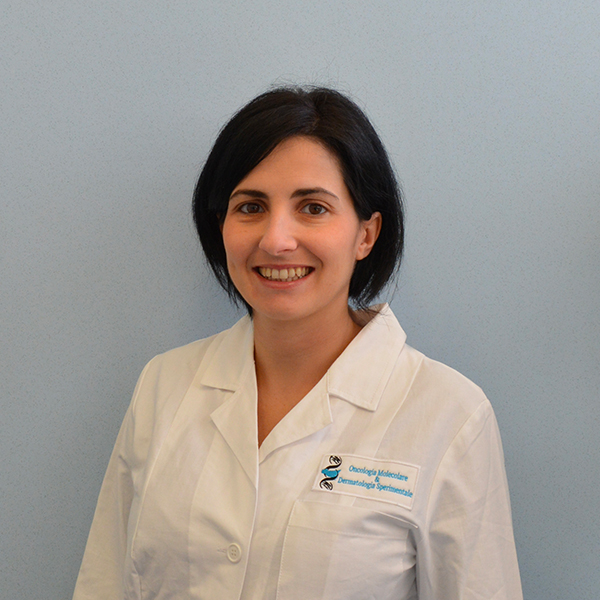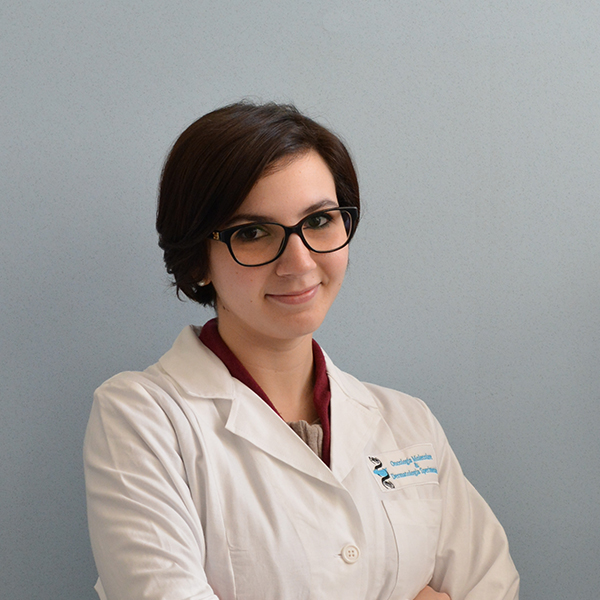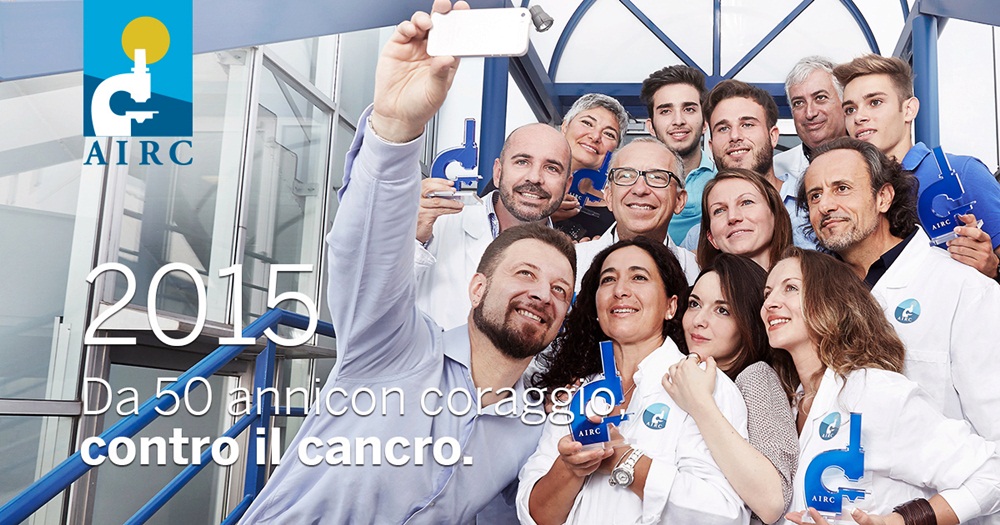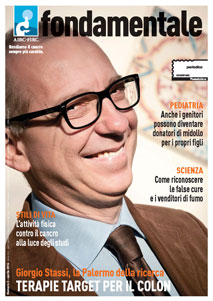 The dott. Miriam Gaggianesi selected for the scholarship award “Fondazione Carlo Chianello 2018”
The dott. Miriam Gaggianesi selected for the scholarship award “Fondazione Carlo Chianello 2018”
News
News about our laboratory
Dr. Aurora Chinnici winner of the AIRC scholarship for the year 2019, in the Fellowship AIRC one-year fellowship “Emanuela Brancati”
 Dr. Aurora Chinnici winner of the AIRC scholarship for the year 2019, in the Fellowship AIRC one-year fellowship “Emanuela Brancati”
Dr. Aurora Chinnici winner of the AIRC scholarship for the year 2019, in the Fellowship AIRC one-year fellowship “Emanuela Brancati”
List available here:
https://www.airc.it/fondazione/cosa-facciamo/cosa-finanziamo/borse-di-studio-per-litalia
The dott. Simone Di Franco selected for the scholarship award “Fondazione Carlo Chianello 2018”
Simone Di Franco, PhD Research Fellow at the Laboratory of Cellular and Molecular Physiopathology at Di.Chir.On.S., was selected for the “Fondazione Carlo Chianello 2018” scholarship, awarded to the most deserving young researchers in the field of clinical and experimental oncology (Announcement of 08-10-2018, prot. n ° 75240). The research activity proposed by Dr. Di Franco will take place within the Laboratory of Cellular and Molecular Physiopathology, directed by Prof. Giorgio Stassi, and will address the theme of “the role of adipose tissue in the progression of colorectal cancer”.
A new collaboration has been established between the University of Palermo and the National Institutes of Health (NIH)
A new collaboration has been established between the Laboratory of Cellular and Molecular Oncology, headed by Prof. Giorgio Stassi, at the Department of Surgical, Oncological and Oral Sciences (DICHIRONS), University of Palermo and the National Institutes of Health (NIH), Bethesda, Maryland, USA. The strenght of this scientific collaboration between DICHIRONS and the NIH is confirmed by the following points:
- Published papers in collaboration with Dr. Ettore Appella, Chief of Chemical Immunology Section, Laboratory of Cell Biology, National Cancer Institute (NCI), and Dr. Carol J. Thiele, Deputy Director of Center for Cancer Research and Deputy Chief of the Pediatric Oncology Branch, at NIH.
- DICHIRONS is provided with a “Special Volunteer” agreement with the NIH in the years 2016-2018.
- Expertise in TP53, stem cell biology and molecular oncology fields is integrated in these two laboratories.
The outcome of the ongoing cooperation is a scientific project based on the role of TP53 in cancer stem cells freshly isolated from patients affected by colorectal cancer (CRC). This project is aimed to develop novel therapies as a precision medicine approach in the oncology field.
[pdf-embedder url=”http://www.cmol.it/wp-content/uploads/2018/10/SPV-Agreement.pdf” title=”SPV Agreement”]AIRC scholarship assigned to a young graduate
Dr Pier Giuseppe Torrani, President of the Italian Association for Cancer Research has announced the renewal, for the third consecutive year, of an AIRC scholarship for the year 2018 to Dr Alice Turdo. The Doctor carries out her research activity in the Cellular and Molecular Oncology Laboratory of the University of Palermo directed by Prof Giorgio Stassi, professor of “Surgical, Oncological and Stomatological Disciplines”.
“It is a great pride for me to be able to carry out this research activity at our University – says Alice Turdo – who is giving me the opportunity to deepen our study in oncology, which is a research field of great interest for public health”.
The Rector Fabrizio Micari congratulated the new scholarship holder. “Having known about the important award that was once again conferred – states the rector – I formulate my best wishes for the excellent result achieved”.
Source Unipa.it
Breast cancer: IL-4 identikit, the molecule that promotes metastasis
An all-Italian study shows that interleukin-4 produced by tumor cells and cells in the surrounding microenvironment favors the progression of breast cancer, paving the way for new therapeutic developments.
In oncological research it can happen that some results, in addition to being relevant in themselves, open the way to new lines of investigation that help to clarify the biology of the tumor. The group of Prof Matilde Todaro of the University of Palermo, has observed that several tumors are characterized by high concentrations of a molecule of the immune system called interleukin-4 (IL-4). The observation is the basis of a recent study that showed how, in breast cancer, IL-4 is essential for the development of metastases and resistance to anti-cancer therapies.
First, the researchers found higher concentrations of IL-4 in triple negative breast tumors, which are more aggressive and tend to give metastases. A long series of experiments in isolated cells and with laboratory animals has allowed to define the molecular mechanisms that lead this molecule to promote tumor progression. “IL-4 – explains Todaro – works by activating the transcription factor NF-kB, which in turn inhibits the DUSP-4 molecule”. In practice all this translates into a “push” favorable to the tumor. To confirm their hypothesis, the researchers conducted other experiments with laboratory animals, demonstrating that if the concentration of DUSP-4 is lowered it is possible to transform non-metastatic tumors into metastatic tumors and vice versa.
These results, obtained thanks to the fundamental support of AIRC and published in the journal Cancer Research, are significant for two reasons. Firstly, they underline once again the importance of the microenvironment for the progression of the tumor. “The IL-4 is in fact produced both by the tumor cells and by the cells present in the tumor microenvironment, for example by the cells of the adipose tissue. This discovery, therefore, reinforces the link already known between obesity and breast cancer, “explains Todaro. Secondly, it opens up a new therapeutic perspective. “There are already NF-kB inhibitors that could be tested in breast tumors that have elevated IL-4 concentrations: this could be the case if the risk of metastasis is reduced”.
Source Airc.it
Here is the key that triggers colon cancer metastasis
The fibroblasts of healthy connective tissue around the tumor push cancer stem cells to spread the disease at a distance. Once the mechanism has been discovered a possible system has also been identified to neutralize it
As long as the tumor cells proliferate in their initial location, they hardly put the patient’s life at risk. The problem are distant metastases to be countered if a cure for cancer is to be made. This is why many research groups all over the world are committed to understanding the mechanisms that allow cells to break away from the tumor and reproduce it in other parts of the body. Understanding the phenomenon will perhaps be possible to find ways to inhibit it. An important result recently published in the Cell Stem Cell magazine was obtained by Ruggero De Maria, the scientific director of the Regina Elena Cancer Institute of Rome, as part of the AIRC program of molecular clinical oncology. De Maria’s group has discovered a molecule that has a difficult name to remember, CD44v6, but a role that is easy to understand: the CD44v6 molecule is responsible for the ability of cancer stem cells to migrate from the intestine and implant into other organs, giving place of relapse and metastasis and thus aggravating the prognosis of the disease; but the CD44v6 is also a kind of label that is on the surface of these cells and allows its presence to recognize them from the others.
“On the surface of stem cells of more aggressive colon tumors, which will give rise to metastasis, this molecule abounds, which is expressed only in very small quantities in primitive tumors” explains Giorgio Stassi, from the University of Palermo, who coordinated the work . “The paradox is that increasing the production of CD44v6, which then determines a negative turn of the disease, is not the tumor, but a series of substances, called cytokines, which are produced by the healthy cells of the surrounding connective”.
The research goes further: “We have also identified an enzyme, phosphatidylinositol 3-kinase (PI3K), which is the Achilles’ heel of these cells and which can be blocked to prevent the formation of metastases”. Laboratory observation was also confirmed in the study with patients: those whose cells expressed the lowest CD44v6 levels survived longer.
Source Airc.it
p63, the protein that causes breast cancer to spread
A new mechanism has been discovered that can make breast cancer metastatic. At the center there is a variant of the p63 protein whose presence is in turn closely linked to the characteristics of the tumor microenvironment.
To make a tumor dangerous is usually its ability to form metastases, that is to invade tissues and organs far from their place of origin. This is why it is important to understand the molecular mechanisms that guide its diffusion in the organism. In the case of breast cancer, one more step in this direction was made by the research group of Prof Matilde Todaro of the University of Palermo. Thanks to a study conducted with the irreplaceable funding of AIRC, Todaro and colleagues have described the fundamental role of a particular variant of p63 protein in making malignant cells, and therefore able to metastasize, breast cancer cells.
“It all started with the observation that different variants of the p63 protein (and relative RNA) are expressed in metastatic and non-metastatic tumor cells”, explains the researcher. “More precisely, we realized that metastatic tumor cells had a greater abundance than a particular variant of p63 called DeltaNp63. Conversely, the cells in which another variant was more abundant – TAp63 – were less invasive “.
The next step was to try to understand the reasons for the abundance of DeltaNp63 in the most malignant cells. The experiments conducted, described in the pages of Oncotarget, show that the game is the tumor microenvironment, e.g. the set of cells and substances in which the tumor is immersed. It is precisely the particular molecules present in this environment that drive the higher expression of DeltaNp63 to the detriment of TAp63.
The researchers also found that DeltaNp63 increases the expression of PI3K and CD44v6, two molecules already known for their involvement in the proliferative and metastatic capacity of colon cancer cells. DeltaNp63 is therefore upstream of a molecular cascade that increases tumor malignancy. “In practice – Todaro makes clear – this molecule does nothing but activate a very convenient path for the tumor itself”. The good news is that there are already inhibitors of these molecules and Todaro and colleagues have shown their effectiveness, in isolated cells and with laboratory animals, in blocking the proliferation and spreading capacity of tumor cells with DeltaNp63 variant. An observation that opens up to the possible development of new therapeutic strategies.
Source Airc.it
The Airc is 50 years old: communication and health
“The Airc is 50 years old: communication and health”: it is the theme of the meeting that will be held on Monday 14th of December at 5.30 pm in the conference room of the Sicilian Region offices in via Magliocco 46 in Palermo.
“On the occasion of the 50th anniversary of Airc, through this initiative dedicated to the commitment of the Sicily Committee, we want to revive the association’s ability to listen and dialogue, gathering in its social communication campaign innovative elements useful to bring broader social groups closer together to the knowledge of the disease “, says Marika Cirone Di Marco, PD regional parliamentarian, who will introduce the work.
“Cancer research has made significant progress – he adds – the synergy between associations of purpose and institutions has proved to be an indispensable tool to promote the improvement of good practices aimed at information, prevention, treatment and rehabilitation”.
Regarding the program of the works, Riccardo Vigneri, president of Airc Sicilia, will speak on the theme “Airc, 50 years of cancer research”; Danilo Allegra on the theme “Communication in the service of health”. The vice-president of the Ars Giuseppe Lupo and the national parliamentarian of the PD Teresa Piccione will also speak. The regional councilor for Health Baldo Gucciardi will conclude the work.
Source Airc.it
From diabetes to cancer looking for stem cells
Giorgio Stassi returned home to Palermo after having worked abroad and now, thanks to the 5- per-thousand project of AIRC, he found a key molecule, present in the cancer stem cells, on which to act to block the cancer metastasis of the colon.
The life of a researcher is usually marked by largely predictable events: the degree, the achievement of a postgraduate degree, perhaps abroad, the first article in an important journal, a teaching position. For some, however, they also touch on experiences of a different kind, which leave a mark: like when Giorgio Stassi understood that the explosion that had shattered the windows of the apartment in Tel Aviv was not due to an accident, but to a suicide terrorist attack, with dead and wounded, the first successfully carried out by Hamas in the heart of the city.
The Middle Eastern experience
In the Israeli capital Stassi had only been here for two days, and was a guest in the apartment lent by a colleague, just above the central department store Dizengoff, when the morning of the 19th of October 1994 a tremendous explosion at the bus stop caused the death of 22 people and injuring another 50, including children walking around the family. “I should have been at that stop,” recalls the researcher sitting in his study at the University of Palermo today. “Right after the explosion, my friend called me and told me to stay home. At the time I thought of returning immediately to Italy, but when I came down a few hours later to realize what had happened in person, as the only trace of what happened I found a large number of commemorative candles. I was struck by the fact that they had cleaned up everything and had even already put the new asphalt back on, to give a clear sign that life was going on “.
Thus he stayed to carry out a research at the Kaplan Hospital of the University of Tel Aviv on a family of Palestinians affected by a hereditary form of type 1 diabetes. In fact, he came from a specialization in endocrinology and diseases of the exchange, taken at the University of Palermo, under the guidance of Giandomenico Bompiani: “I have always been passionate about chemistry, and for a while I had thought that my career would be that” he recalls. “After graduating in medicine I chose endocrinology, because the group of Professor Bompiani, to whom I am still bound by a relationship of great esteem and affection, was known for the good level of research he carried out”.
At the fourth year of university he began his internship, dedicating himself to the research on transplanting pancreatic islets, the groups of cells that produce insulin: “I took care of the patients during the school of specialty, but then in the following years I was absorbed to 100% from laboratory research, “he explains.
These are the years in which he met his wife, Prof Matilde Todaro, married in 1993, with whom, after sharing the school of specialty, today divides the passion for research, the laboratory and the study on the ground floor, furnished with two desks and numerous shelves loaded with books. The walls are embellished with prints and reproductions of ancient paintings, among which the Lady with the ermine by Leonardo Da Vinci stands out. On a table in the corner, are placed two nets with the oranges of AIRC: “We owe a lot to AIRC: if it were not there I really do not know where Italian oncology would be today” emphasizes with a mixture of gratitude and pride “.
Oncology arrives in the USA
In Stassi’s professional life, the oncology would have entered some time after the Israeli experience: “After the two months spent in Tel Aviv I moved to Pittsburgh, in the United States, where with the group of Massimo Trucco, I contributed to studies not only on diabetes, but also on the mechanisms underlying autoimmune diseases, publishing in magazines such as Nature and Science. Just in Science, in 1997, a study appeared with my fraternal friend Ruggero De Maria, also known during his specialization in Palermo “. With De Maria, current scientific director of the National Cancer Institute “Regina Elena” of Rome, Stassi today participates in one of the great projects financed with the 5-per -thousand of AIRC. “After studying autoimmunity in the thyroid and pancreas together with him, I began to deal with thyroid cancer, being among the first to discover the cancer stem cells in that gland and, later – together with De Maria – those of the colon”.
In Pittsburgh, where Stassi had moved alone while his wife completed the school of specialty, life is marked by research in the laboratory and some travel to visit the beauty of America. “Going back to Palermo was not at all simple: the flight included three or four stopovers,” he recalls. This is why Matilde joins him immediately after her specialization in 1997.
In the same year the stork knocks on the door: “Thinking about the imminent arrival of the first child we discussed a bit ‘and at the end we decided to return to Italy”. The decision is not taken lightly, because even if Pittsburgh does not present the attractions of the native Palermo, the scientific perspectives are much more attractive than those that the couple expects to find at home.
It is at this point that the main object of the research becomes cancer: the arrival in cancer research is sealed in 1998 by a period spent in Rome, at the Department of Hematology and Oncology of the Higher Institute of Health, directed by Cesare Peschle. There Stassi initially deals with hematological tumors, and then focus on cancer stem cells: “The definition of stem cells, for these cancer cells, could generate a bit ‘of confusion, so much so that in the past it has been discussed at length on the opportunity to look for a different definition “, explains the researcher from Palermo. “These are cells that initiate the tumor and for this reason they are responsible for relapses, because when after an operation there are still very small quantities they are sufficient to restart the tumor growth”.
The beach house
From the period in Rome, when he lived near Piazza Vescovio and moved by public transport, he kept a fantastic memory: “It’s a splendid city. It is as if it were my home “. After just over a year the Roman experience ends, and Stassi has the opportunity to return to live in Palermo, in the villa of Mondello a stone’s throw from the beach. In 2003, when the firstborn Umberto is six years old, Constance is born.
“Over the weekends I relax taking care of the garden, which always needs so much care, and all the housework. I do very well the plumber and the carpenter “he says with a smile. “I almost never cook, but on Sundays I make pancakes and occasionally some sweets”. The beach, too chaotic in the hot season, is very pleasant outside the season. “Without umbrellas and deck chairs it is splendid. Starting in October I go with my son, who loves windsurfing and makes regattas and free style. When there is good wind for him we do an hour’s drive and we all go to Mozia, near the salt marshes of Marsala, where there is a natural lagoon with a very shallow seabed and can have fun in complete safety “.
From the counter to the patient
Life at the university is marked by the morning appointment of the “kiosk” at 8.30: “Every day one of the boys in the workshop – 20 scholarship holders, students, PhD students and PhDs, mostly biotechnology graduates – exhibit at all a research of which he read on some of the magazines that he regularly follows, so we discuss them all together and keep up-to-date. ” The meeting takes place in a large hallway covered with tall metal cabinets, at the base of the stairs that go down to reach the workshop, at the basement level: the visitor is welcomed by a friendly multi-faceted and multicolored array of chairs each with its own distinct personality. The informality of places and furnishings – which in the real workshops leave room for cutting-edge equipment – goes well with the custom to celebrate every important step in the scientific career of each (the first published article, the degree, the doctorate , the first research published as first author) carrying a tray of sweets. Considering the frequency with which this happens – and the mastery and generosity of Sicilian confectioners – the joke that recurs among the boys is that this is not the right laboratory for those who want to keep the line.
The most recent celebration concerns a study that was published in the prestigious journal Cell Stem Cell, on a molecule that appears crucial in the onset of colon cancer metastasis. “In the preclinical studies the use of a drug that acts on this molecule has been shown to work very well, so much so that we have proposed its use as an adjuvant therapy in colon tumors”. His son Umberto, who attended the scientific high school with the idea of enrolling in mechanical engineering, contributed to the publication: “As he draws very well, I asked him to illustrate the mechanism we discovered, using the standard car metaphor that , when it is retouched in a particular environment, it turns into a racing car, escaping control and giving rise to metastasis. Now we hope that the next phase of clinical experimentation will confirm these results, which are very encouraging, even in patients “. Last 7th of February, at a meeting of the 5-per-thousand AIRC program, of which his group is part, it was decided that the experiment conducted in Palermo has a good chance of working on humans and therefore soon the first patients.
A cure for chemioresistance
In the Laboratory of cellular and molecular physiology of the Department of Surgical and Oncology disciplines of the University of Palermo, also known as “Stassi Lab“, we study the mechanisms that regulate the survival and resistance of cancer cells to conventional therapies, in particular in colon, lung and breast cancer.
The group participates in the special program of molecular clinical oncology 5-per-thousand AIRC, contributing primarily to the expansion of the collection of cancer stem cells (CSCs, from the English abbreviation Cancer Stem Cells) of colon and lung, cataloged and stored in the biobank of Higher Institute of Health in Rome. In particular, this program deals with: 1) the collection and treatment of tumor samples from which the cancer stem cells are extracted and isolated, and 2) the sending of the derived cell lines to the biobank accompanied by a large number of clinical and genetic information very useful for all future research on these tumors.
Another important line of research concerns a group of growth factors (called bone morphogenetic proteins, BMP) involved in the development of bone and cartilage and in the process of transformation of CSCs into tumor cells: these growth factors seem to have also a determining role in resistance to conventional therapies and in the appearance of relapses.
Finally, the Stassi Lab deals with preliminary testing of the molecular targets identified by other research groups participating in the 5-per-thousand AIRC Program, directed by Prof Ruggero De Maria.
Source Airc.it


